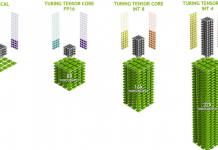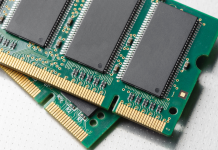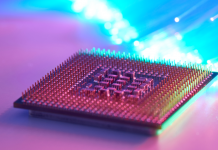
What’s the difference between core and threads in CPU?
The similarities between the two are striking at first glance. But if you dig deeper, you’ll start to see that their differences are more than skin-deep.
So, today in this article, let’s compare core and threads and dig deep into how they are actually different from one another!
What is a CPU Core?
A CPU core is a single processing unit within a central processing unit (CPU). A CPU typically contains multiple cores, each of which can execute instructions and process data independently. This allows the overall performance of the CPU to be improved by distributing workloads among the various cores.
The term “core” generally refers to the part of the CPU that handles most of the computational work. However, some CPUs have additional components that share responsibility for certain tasks. For example, GPUs often contain multiple cores that are responsible for graphics processing.
The number of cores within a CPU can vary depending on the specific model, but most modern CPUs contain at least four cores. Some high-end CPUs can have up to 32 or even 64 cores. Multi-core processors are becoming increasingly common in both consumer and commercial computers!
What are Threads in a CPU?
Threads are the basic units of execution in a CPU. A thread is like a virtual processor that can execute code independently from other threads. Threads allow multiple processes to run concurrently on a single CPU, which can improve performance by allowing different parts of the overall process to be executed in parallel.
Most modern CPUs support multithreading, which means they have hardware support for executing multiple threads simultaneously. In some cases, such as with Intel’s Hyper-Threading technology, a single physical CPU core can appear as two or more virtual processors to the operating system, each with its own set of registers and execution resources.
This allows multiple threads to be scheduled on the same core and makes better use of idle cycles when one thread is waiting for data from another part of the process (such as when fetching data from memory).
What is Multi-Threading?
Multi-threading is a process of executing two or more threads concurrently within a single process. A thread is the smallest unit of execution within a program that can be scheduled by an operating system. Multi-threading allows for concurrent execution of multiple parts of a program, which can potentially lead to increased performance on multi-core processors.
There are several benefits to using multi-threaded programming techniques, including:
- Increased parallelism: Since multiple threads can be running at the same time, this effectively increases the level of parallelism and potential throughput for your application. This is especially beneficial for applications that are CPU bound (i.e., they spend most of their time processing data rather than waiting on external events).
- More efficient use of processor resources: In many cases, one large task can be broken down into smaller tasks that can then be executed in parallel by different threads. This helps to increase overall efficiency since idle periods are minimized and individual cores aren’t overloaded with work from just one thread.
- Responsiveness: Some types of applications need to remain responsive even while performing long running tasks (such as file operations or database queries). By using separate threads for user interface elements and background processes, it’s possible to keep the UI responsive while still allowing lengthy operations to take place without blocking everything else!
What is Hyper-Threading?
Hyper-Threading is a feature found on some Intel processors that allows multiple threads to run simultaneously on a single processor. This can improve performance in certain workloads, particularly those with high thread counts. Hyper-threading is not the same as multi-core processing, which involves physically separate cores within a single CPU die.
Rather, hyper-threading creates virtual cores (also known as logical CPUs) that share resources such as caches and execution units. Hyper-threading can provide a significant performance boost in certain workloads, but it’s not suitable for all applications. If an application is not designed to take advantage of multiple threads, then hyper-threading will actually degrade performance.
In general, hyper-threading works best with highly parallelizable workloads such as video encoding and rendering, scientific calculations, and database operations. One key thing to keep in mind with hyper-threading is that it does not double the number of cores or threads that can be executed simultaneously. Rather, it allows for more efficient use of existing resources, which can lead to better performance.
Core V/s Threads
There is a lot of confusion when it comes to the difference between cores and threads. To put it simply, think of a core as an actual physical processor within your computer’s CPU (central processing unit). A thread is like an imaginary worker inside that physical processor. The more cores you have, the more threads you can have running at any one time.
That’s because each core can handle multiple threads simultaneously (although not always perfectly). More cores/threads generally means better performance for CPU-intensive tasks. However, it’s important to note that not all applications can take advantage of multiple cores/threads. In fact, many older programs are only designed to use a single core/thread. That said, most modern software is written with the potential for multi-core processors in mind.
So if you’re wondering whether you should get a quad-core processor with four threads or an octa-core processor with eight threads, the answer depends on what kinds of tasks you plan on using it for!
The Bottom Line
So, what’s the difference between core and threads?
Core is an integer value that represents the number of physical processors available in your machine. It doesn’t matter if you have one core or eight cores—it’s always just one value.
Threads, on the other hand, are different from cores because they can run on multiple cores at the same time. Threads are not limited to a single core, nor are they limited to running on a single processor. They can run on multiple processors at once—even if those processors are on different machines!




